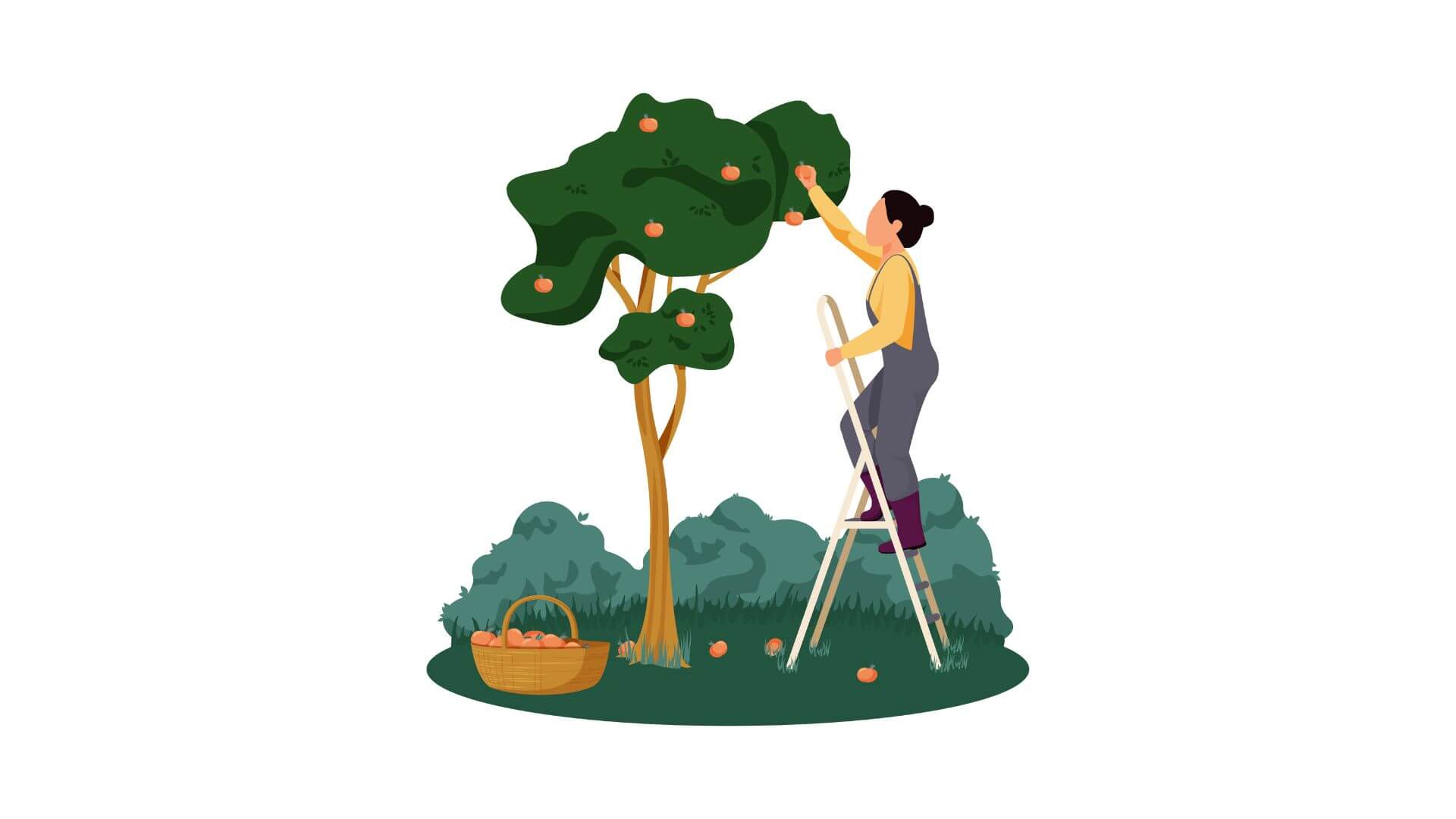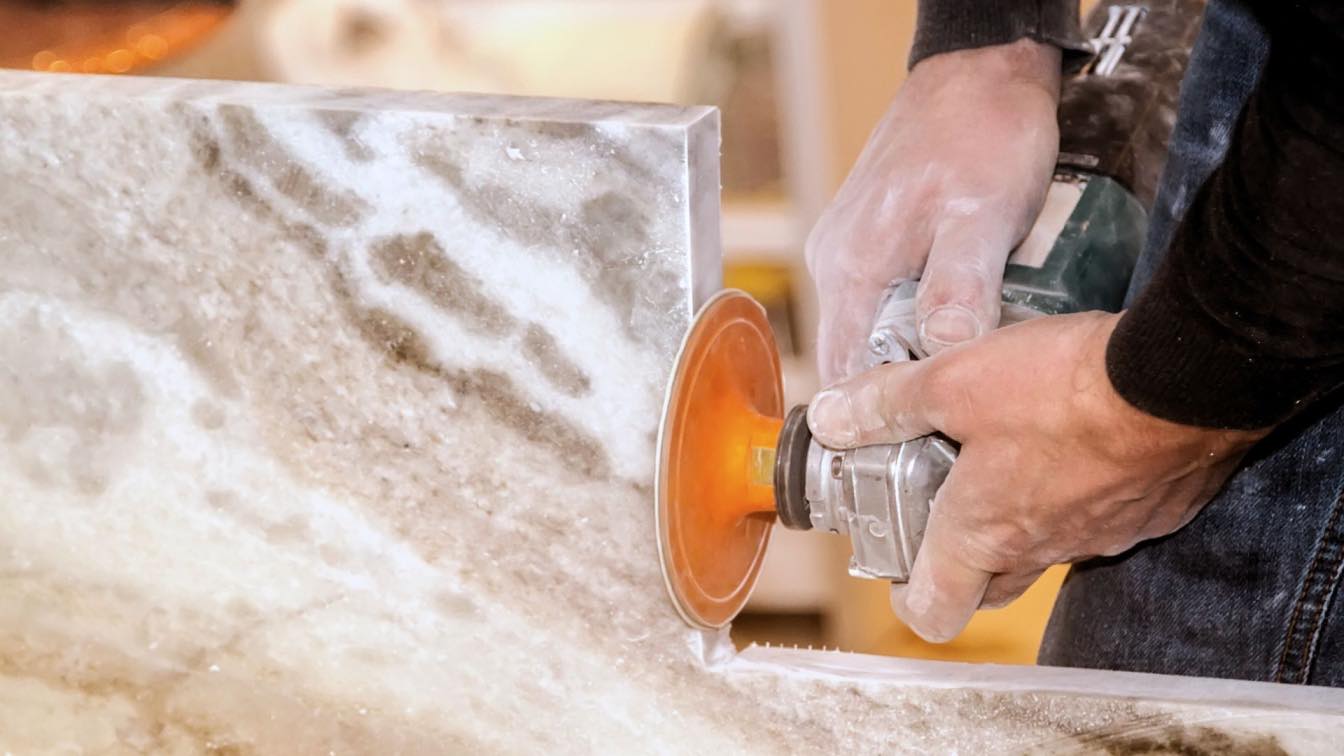Whether you're planting traditional fruit trees like apples and cherries or more specialized varieties such as grafted persimmon trees, it’s important to ensure they receive the right amount of water.
This article discusses the basics of fruit tree watering, including understanding your tree's needs based on its environment and stage of life, the impact of different soil types on water retention, and how various weather conditions can alter your watering schedule.
Fruit Tree Watering: The Basics
Water Needs for Different Tree Ages
Young trees, with their shallow root systems, need a gentle but consistent supply of water to encourage growth. As trees age, their roots dig deeper into the soil, allowing them to access moisture from further below the surface. This means you'll water mature trees less frequently, but when you do, you'll need to water deeply to reach those established roots.
You can also use a simple technique to assess whether your fruit trees need water. Push your finger into the soil, going as deep as you can.
When you remove your finger, take a look at it. If there’s soil sticking to your finger, it means there's still some moisture in there. But if your finger looks pretty clean, that's a sign the soil is too dry and you need to water the tree.
Ensure to water the fruit trees early in the morning or late in the afternoon. Watering at these times helps ensure that less water is lost to evaporation and the roots have time to absorb the water before it gets too hot or cold.
Soil Type and Water Retention
There are different soil types. Sandy soil doesn't hold water well—it drains too fast, meaning you might need to water your trees more often.
Clay soil is the opposite; it holds onto water for a long time, which can be good or bad. Good, because you don't have to water as much. Bad, because too much water can make the roots too wet, hurting the tree.
To get it right, you need to know what kind of soil you have. You can do a simple test by grabbing a handful of wet soil and squeezing it. If it stays in a ball, you have clay soil. If it falls apart easily, it's sandy.
Loamy soil is ideal because it holds water but also drains well. Adjust your watering schedule based on your soil type—more frequent for sandy soils and less for clay soils.
Adjusting Watering Based on Weather Conditions
Weather plays a big role in how much water your fruit trees need. If it's been raining, you can cut back on watering because the soil is already wet.
But during dry spells or droughts, you'll need to water more. Wind can also dry out the soil and leaves, so check the soil to see if it needs water after windy days.
It's not just about the amount of rain or heat, though. Humidity matters, too. When the air is dry, water evaporates faster from the soil and the leaves. But if it's humid, the moisture sticks around longer.
Keeping an eye on the weather helps you plan your watering schedule better. If hot, dry weather is coming up, give your trees a good soak to help them prepare. Similarly, don’t water fruit trees before the rainy season.
Mulching and Water Conservation
Mulching involves spreading wood chips, straw, or leaf mold around the trees' soil surface. The mulch helps retain soil moisture by reducing water evaporation. This means you won't need to water the trees as often, conserving water resources.
When applying mulch, using the right amount is important; a 2 to 4-inch layer is usually sufficient. It's equally important to avoid piling mulch against the tree trunk to prevent excess moisture build-up, which can encourage rot.
Organic mulches have the added benefit of breaking down over time, which improves soil fertility. This promotes better root growth and overall tree health.
Key Takeaways
Water is essential in nurturing fruit trees; getting it right goes beyond just sticking to a routine.
Maintain your fruit trees well by keeping in mind the following:
- Pay attention to the age of your trees; younger ones will generally need more frequent watering.
- Check your soil type—sandy soils need water often, while clay holds water longer.
- Keep an eye on the weather; too much rain or a sudden dry spell can change how much water your trees need.
- Apply mulch around your trees to retain moisture and save water.





